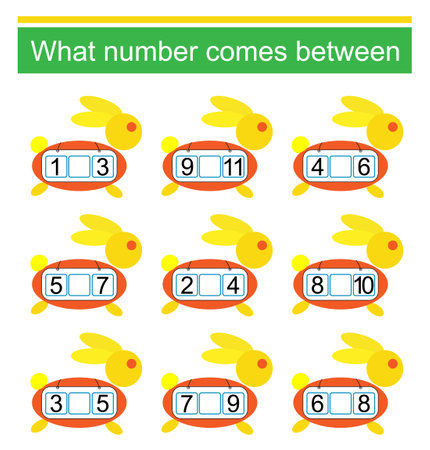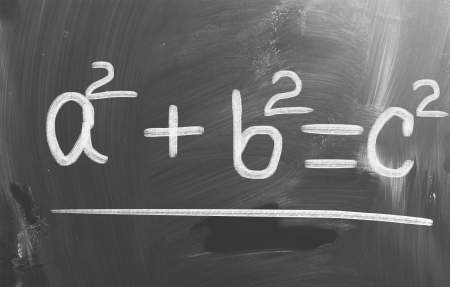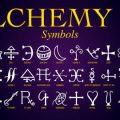Astrology Across Cultures: Frameworks and Foundations
When exploring the intersection of Chinese and Western astrology, it’s essential to first understand the unique frameworks and foundational principles that define each system. Both traditions have evolved over centuries, deeply embedded within their respective cultures, yet they diverge sharply in their worldviews, symbolism, and approaches to interpreting cosmic influence.
Historical Roots and Cultural Significance
Western astrology traces its lineage back to ancient Babylonian star charts and Hellenistic philosophy, where the twelve zodiac signs mapped the Sun’s journey across the sky. Rooted in Greco-Roman mythology and later refined during the Renaissance, this tradition emphasizes individual personality traits, fate, and psychological archetypes. In contrast, Chinese astrology emerged from a holistic worldview shaped by Daoism, Confucianism, and folk cosmology. Its foundation lies in a 12-year cycle based on animal signs and elemental energies, with each year imparting distinct influences on both individuals and society as a whole. Chinese astrology is interwoven with cultural rituals—from Lunar New Year celebrations to matchmaking—reflecting collective values rather than just personal destiny.
Worldview: Linear vs. Cyclical Time
A fundamental difference between these systems is their perception of time. Western astrology operates on a solar-based calendar emphasizing linear progression through life stages. Birth charts are calculated for exact moments in time, offering highly personalized readings. Chinese astrology, however, employs a lunisolar calendar and views time as cyclical. The recurring sequence of animal years symbolizes patterns repeating across generations, fostering a sense of continuity and harmony with nature’s rhythms.
Symbolism and Interpretation
Both systems use rich symbolism—planets and constellations in the West; animals and elements in the East—to interpret character traits, compatibility, and life prospects. Yet while Western astrology often focuses on internal psychology and self-actualization, Chinese astrology highlights one’s place within family, community, and larger cosmic cycles. These differing emphases shape not only personal identity but also how societies understand luck, destiny, and change throughout the year.
2. Zodiac Signs: Animals Meet the Planets
When we compare the Chinese zodiac’s twelve-animal cycle with the Western zodiac’s twelve astrological signs, we see two distinct systems of symbolism and identity formation—yet both reflect humanity’s quest to find meaning in the cosmos. The Chinese zodiac assigns an animal to each year in a repeating twelve-year cycle, with each creature representing certain archetypal traits and destinies. In contrast, the Western zodiac is organized around twelve constellations, each governed by a planet and assigned to individuals based on their birth month. These signs are viewed as cosmic influences shaping personality, fate, and even compatibility.
| System | Cycle | Symbolism | Archetypes | Identity Formation |
|---|---|---|---|---|
| Chinese Zodiac | Twelve years (one animal per year) | Animals (Rat, Ox, Tiger, etc.) | Cunning Rat, Loyal Dog, Noble Dragon, etc. | Emphasis on social role, family expectations, generational cycles |
| Western Zodiac | Twelve months (one sign per month) | Constellations & Planets (Aries-Mars, Taurus-Venus, etc.) | Bold Aries, Sensual Taurus, Mysterious Scorpio, etc. | Focus on individual psychology, self-discovery, personal destiny |
The Symbolic Language of Animals and Stars
The Chinese system grounds its symbolism in animals that represent virtues or vices familiar to everyday life—strength (Ox), cleverness (Monkey), or loyalty (Dog). Meanwhile, Western astrology employs mythological archetypes linked to planetary deities and cosmic energies. For example, Mars energizes Aries with assertiveness; Venus blesses Taurus with sensuality. This difference reflects how each culture interprets human nature: the Chinese zodiac highlights communal roles and cycles of time; Western astrology emphasizes inner drives and planetary influence.
Cultural Shaping of Identity
In American society today, both systems are popular but serve different psychological needs. Many Asian Americans use their birth animal as part of their cultural identity and family traditions. Meanwhile, reading horoscopes based on Sun signs is a common social activity across diverse communities in the U.S., offering insight into career choices or romantic compatibility. Whether someone identifies as a resourceful Rat or a passionate Leo depends not just on birthdate but also on the stories and values embedded in each tradition.

3. Yearly Outlooks: How Predictions are Made
When it comes to forecasting the year ahead, both Chinese and Western astrology offer unique yet systematic approaches. While they share the goal of providing annual guidance, their methodologies are rooted in very different cosmological frameworks. Understanding how each tradition crafts its yearly predictions can deepen our appreciation for their respective wisdom and practical applications.
Chinese Astrology: Lunar Cycles and Five Elements
Chinese astrology bases its yearly predictions on the lunar calendar, where each year is associated with one of twelve zodiac animals—Rat, Ox, Tiger, and so on. The cycle repeats every twelve years, but is further nuanced by the integration of the Five Elements: Wood, Fire, Earth, Metal, and Water. Each year combines an animal sign with an element, resulting in a 60-year cycle that adds depth to annual forecasts. Practitioners analyze how the ruling animal and element interact with an individuals birth chart (BaZi or Four Pillars), as well as global patterns. For instance, a Wood Horse year will have different energies than a Metal Horse year. These influences are believed to impact everything from career and health to relationships and broader societal trends.
Western Astrology: Solar Returns and Planetary Transits
Western astrology uses the solar calendar and primarily focuses on the Sun’s return to its natal position—the Solar Return—each year as a marker for personal annual themes. Astrologers also study planetary transits, tracking the movement of planets like Jupiter, Saturn, or Mercury as they form significant aspects to a person’s natal chart throughout the year. These planetary movements are interpreted through the lens of archetypes and psychological patterns, providing insight into likely opportunities and challenges. Additionally, Western astrology often incorporates “progressions,” which look at symbolic developments in a person’s birth chart over time to predict key phases of growth or change during the year.
Comparing Predictive Systems
While Chinese astrology emphasizes cyclical rhythms tied to nature and collective energies, Western astrology prioritizes individual experience as shaped by planetary cycles. Both traditions require intricate calculations—whether mapping out elemental combinations or plotting planetary positions—and use these frameworks to guide individuals through practical decision-making and self-reflection.
Cultural Contexts in Annual Forecasts
In American culture, Western astrological outlooks are often found in magazines or apps focusing on sun signs and horoscopes, while Chinese New Year predictions may be featured during Lunar New Year festivities in Chinatowns across major cities. The blending of these methods is increasingly popular among multicultural communities seeking holistic perspectives on what each new year may bring.
4. Cultural Relevance: Impact on Modern American Life
Astrology has become a significant part of American pop culture, with both Chinese and Western systems influencing daily life in unique ways. The two traditions are increasingly visible in media, entertainment, and digital platforms, reflecting the diverse cultural fabric of the United States.
Embracing and Adapting Astrology
Western astrology, with its sun signs, birth charts, and planetary transits, is deeply embedded in American lifestyle—think newspaper horoscopes, astrology podcasts, and Instagram meme accounts. At the same time, Chinese astrology’s 12-year animal cycle and elemental themes have found their way into mainstream culture, especially around Lunar New Year celebrations and themed merchandise. Americans often encounter both systems side by side, adapting them to fit personal identity or community rituals.
Blending Traditions in Daily Life
The rise of horoscope-centered apps and online platforms has made it easier for Americans to access, compare, and even blend astrological systems. Apps like Co–Star or The Pattern focus on Western astrology but sometimes reference Chinese zodiac signs as additional personality markers. Meanwhile, lifestyle magazines may publish combined horoscopes, encouraging readers to explore how their Chinese sign might interact with their Western sun sign.
Common Uses of Astrology in American Culture
| Application | Western Astrology | Chinese Astrology | Blended Approaches |
|---|---|---|---|
| Daily Horoscopes | Widely available in newspapers & apps | Common during Lunar New Year; less frequent daily use | Lifestyle columns occasionally offer dual readings |
| Dating & Relationships | Zodiac compatibility tests are popular in dating apps | Chinese zodiac used for matchmaking in some communities | Some users check both systems for deeper insights |
| Merchandise & Gifts | T-shirts, mugs with star signs | Zodiac animal charms and decor peak seasonally | Crossover products during New Year or special events |
| Cultural Events | Aquarius or Leo-themed parties; “birthday season” gatherings | Lunar New Year festivals with parades and food fairs | Mashups at multicultural events or themed pop-ups |
Navigating Identity Through Astrological Lenses
This intersectional embrace reflects a broader American trend toward personalization and hybrid identity. For example, second-generation Asian Americans might celebrate their birth year animal while also following their Western zodiac forecast—using both as touchstones for self-reflection or conversation starters. Whether as serious spiritual guidance or light-hearted entertainment, the interplay between Chinese and Western astrology continues to shape how Americans understand themselves and connect with others.
5. Bridging the Stars: Fusion, Contrasts, and Contemporary Trends
The Growing Trend of Astrological Integration in America
Across the United States, there is a noticeable uptick in interest surrounding both Chinese and Western astrology. Many Americans, particularly millennials and Gen Z, are actively integrating elements from both systems into their personal lives. Social media platforms teem with memes, horoscopes, and compatibility charts that blend the zodiac animals with Sun signs, allowing for creative cross-cultural expressions of identity and fate. Astrology apps and online communities often feature dual readings—such as pairing your Chinese zodiac sign (e.g., Dragon) with your Western Sun sign (e.g., Gemini)—giving users multidimensional insights into their personalities, relationships, and yearly prospects.
Challenges of Syncretism: Where East Meets West
Despite this burgeoning fusion, integrating Chinese and Western astrology poses several challenges. The foundational philosophies differ significantly: Chinese astrology centers on cycles of twelve years tied to lunar calendars and complex elemental interactions, while Western astrology focuses on monthly solar cycles and planetary aspects rooted in Greco-Roman cosmology. This divergence can lead to confusion or oversimplification when individuals attempt to merge systems without deep understanding. Additionally, purists from both traditions may question the validity or authenticity of hybrid interpretations, raising debates about cultural appropriation versus respectful appreciation.
Cultural Resonance: Why Each System Appeals to Different Communities
The enduring appeal of each astrological system reflects deeper cultural values and communal identities. For many Asian American communities, Chinese astrology serves as a bridge to heritage, family tradition, and collective celebration—especially during Lunar New Year festivities. In contrast, Western astrology’s emphasis on individual personality traits and self-actualization resonates strongly within America’s culture of personal growth and self-expression. Still, contemporary Americans increasingly value pluralism; those with multicultural backgrounds or global mindsets find meaning in drawing from both wells of wisdom.
Looking Ahead: Astrological Pluralism in a Global Age
As the boundaries between cultures continue to blur in our interconnected world, Americans are charting new territory by experimenting with both Chinese and Western astrological frameworks. This syncretic approach provides richer narratives for self-understanding while encouraging cross-cultural dialogue. While challenges remain—such as ensuring respectful engagement with each tradition—the fusion of these star-based systems mirrors broader societal trends toward inclusivity and hybridity. Ultimately, the intersection of Chinese and Western astrology offers Americans an expanded cosmic toolkit for making sense of themselves and the world around them.


